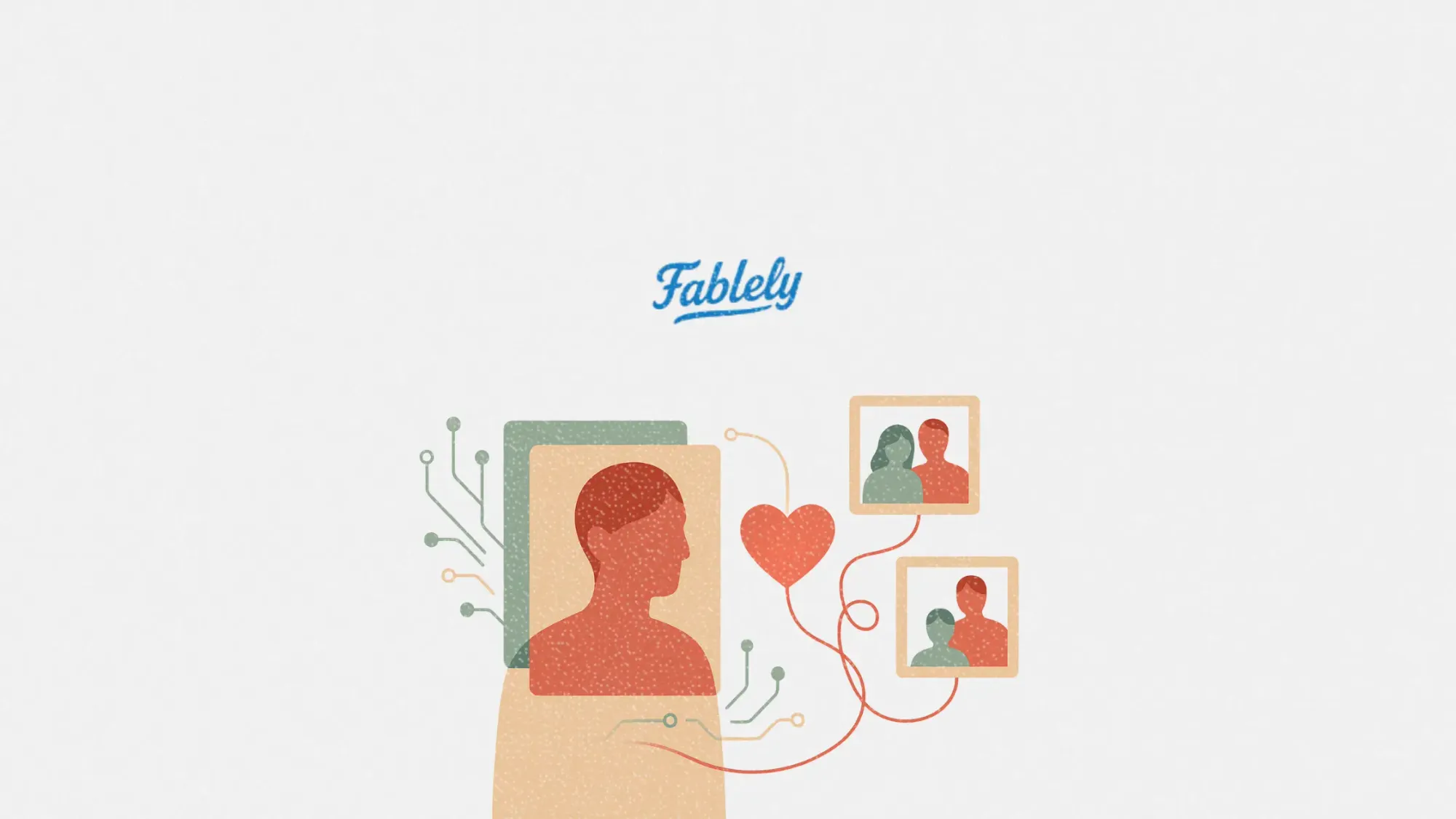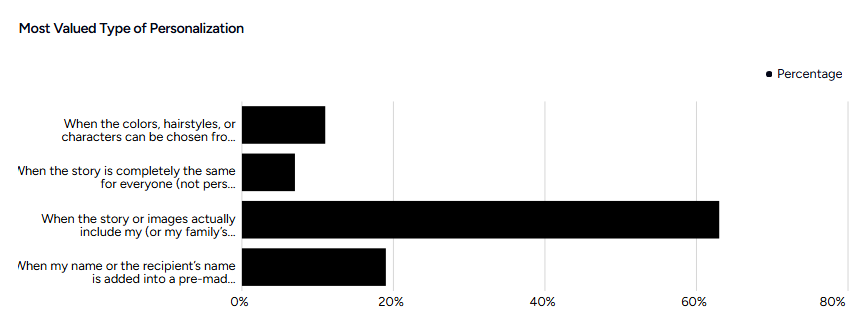Americans want real personalization, and they’re paying for it
New data shows consumers want personalization rooted in real faces, not just names

What does “personalized” mean in 2025? Not just your name on a coffee mug. According to new survey data from Fablely, 87% of Americans say they would pay more for products that feel emotionally meaningful. But here’s the catch: it only counts if it includes something real, like their own face, family stories, or likeness.

For marketers and brand strategists, this isn't just a trend. It’s a new expectation. The bar for personalization is higher, and the old playbook won’t cut it.
This article explores the rise of what researchers are calling the personalization premium. It’s a shift in how U.S. consumers define, desire, and spend on personalized experiences. The findings show a clear opportunity for brands that are ready to ditch one-size-fits-all customization and lean into storytelling, identity, and thoughtful tech.
Short on time?
Here’s a table of contents for quick access:
- What the data says about personalization preferences
- Real identity is in, generic customization is out
- Consumers cautiously welcome AI with boundaries
- Family stories are the new emotional currency
- What marketers should know and do next

What the data says about personalization preferences
According to the survey, 79% of Americans say it's important that online purchases feel personally tailored. But this isn’t just lip service. A full 87% say they would pay more for a product that feels emotionally meaningful. Even more compelling, 30% would pay significantly more, not just a little extra.
This shift reflects changing consumer priorities. Emotional value now rivals convenience and novelty. Products that reflect identity and personal history carry more weight and more wallet share.
Real identity is in, generic customization is out
Consumers are done with templates. When asked what kind of personalization feels most special, 63% said they want their real face or likeness used. That includes photos of themselves or their families, not avatars or default presets.
Only 19% said adding their name to a pre-designed product felt personal. Just 11% said choosing colors or hairstyles from a preset menu mattered. Real beats symbolic. If personalization doesn’t mirror actual identity, it doesn’t land.
For marketers, this is a wake-up call. Personalization features need to go deeper than “pick your font” or “upload a quote.”
Consumers cautiously welcome AI with boundaries
AI is no longer the villain, but consumers are watching closely. While only a third believe AI-generated content is a valid form of creativity, another 28% say it depends on how much human guidance is involved. That’s more openness than expected.
When it comes to emotional or storytelling-driven experiences, AI is even more accepted. A huge 87% say technology can make emotional moments more meaningful if used thoughtfully. Only 4% said it makes experiences feel less personal.

The keyword here is “thoughtful.” Consumers are not rejecting AI. They’re rejecting lazy automation. Brands using AI must position it as a human enhancement, not a human replacement.
Family stories are the new emotional currency
One of the strongest signals in the data is this: 95% of respondents say preserving family stories and heritage is important. More than half called it extremely important.
Even more telling, 46% said the most valuable stories to preserve are everyday memories and funny moments. That beat out milestones, values, and even cultural heritage. This isn’t about nostalgia for nostalgia’s sake. It’s about anchoring identity and relationships in shared history.
For product teams and brand strategists, this is rich creative ground. Memory-based marketing and tools that help preserve real family narratives can unlock deep emotional loyalty.
What marketers should know
Here’s how to put these insights into action:
1. Redefine what counts as personalization
If your product only offers surface-level tweaks, it won’t meet expectations. Create ways for customers to add their real stories, photos, or family input. Think beyond the name field.
2. Use AI to scale meaning, not mimic it
AI works best when it helps humans express themselves. Use it to turn photos, voice notes, or story prompts into emotionally meaningful outputs. Avoid outputs that feel mass-produced or generic.
3. Center memory and identity
If your brand can help customers preserve or share their real lives, you’re tapping into one of the most valued emotional drivers of 2025. Build campaigns around storytelling, shared family moments, and personal milestones.
4. Be upfront about the tech
Transparency builds trust. Tell your customers when AI is involved and show how their input shapes the outcome. Human-in-the-loop design will matter more than ever.
Consumers are not just looking for convenience or clever design tweaks. They want recognition. They want their identity, their history, and their emotions built into the products and experiences they pay for.
Brands that can deliver that kind of thoughtful personalization will earn not just attention but premium pricing and long-term loyalty.
The personalization game has changed. Are you playing at the right level?




